Tableau Desktop Specialist 온라인 연습
최종 업데이트 시간: 2025년03월24일
당신은 온라인 연습 문제를 통해 Tableau TDS-C01 시험지식에 대해 자신이 어떻게 알고 있는지 파악한 후 시험 참가 신청 여부를 결정할 수 있다.
시험을 100% 합격하고 시험 준비 시간을 35% 절약하기를 바라며 TDS-C01 덤프 (최신 실제 시험 문제)를 사용 선택하여 현재 최신 151개의 시험 문제와 답을 포함하십시오.
정답:
Explanation:
Data blending simulates a traditional left join. The main difference between the two is when the aggregation is performed. A join combines the data and then aggregates. A blend aggregates and then combines the data.
From the official website:
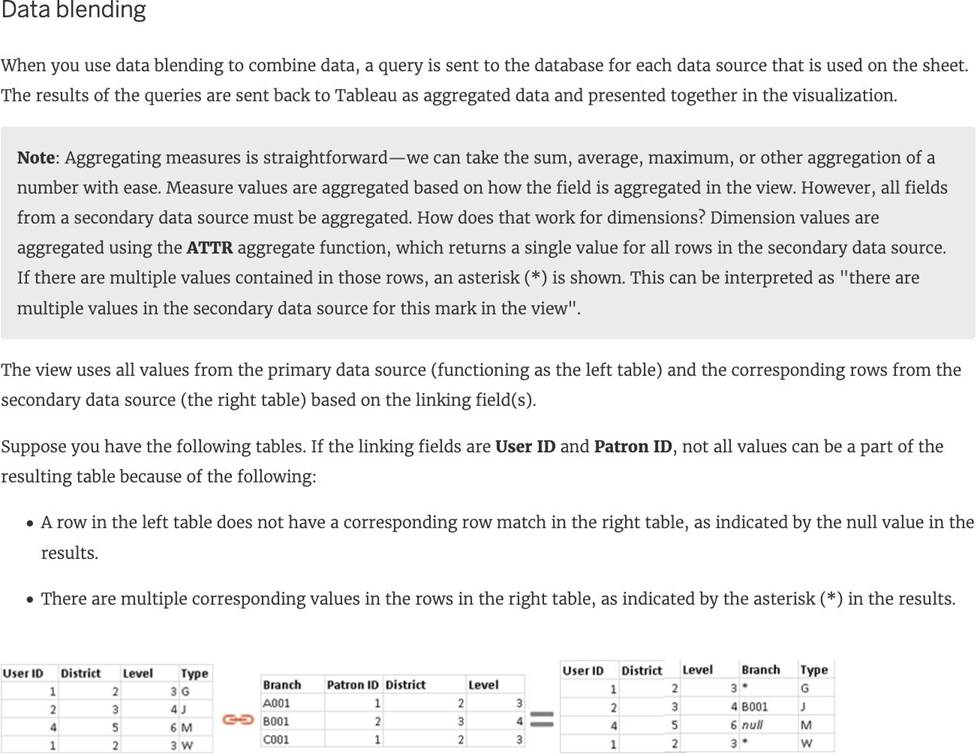

Reference: https://help.tableau.com/current/pro/desktop/en-us/multiple_connections.htm
정답:
Explanation:
In Tableau, you can aggregate measures or dimensions, though it is more common to aggregate measures. Whenever you add a measure to your view, an aggregation is applied to that measure by default. The type of aggregation applied varies depending on the context of the view.
When you add a measure to the view, Tableau automatically aggregates its values. Sum, average, and median are common aggregations; for a complete list, see List of Predefined Aggregations in Tableau. The current aggregation appears as part of the measure's name in the view. For example, Sales becomes SUM(Sales). Every measure has a default aggregation which is set by Tableau when you connect to a data source. You can view or change the default aggregation for a measure―see Set the Default Aggregation for a Measure.
You can change the aggregation for a measure in the view from its context menu:
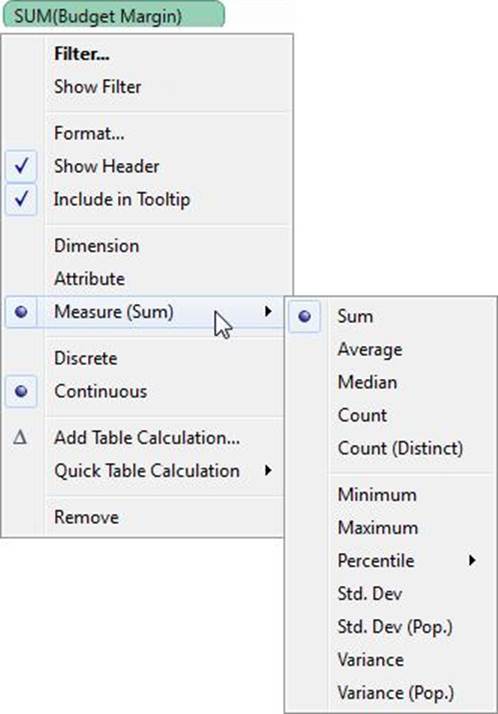
Reference: https://help.tableau.com/current/pro/desktop/enus/calculations_aggregation.htm
정답:
Explanation:
Upon clicking on a filter, we see the following options:
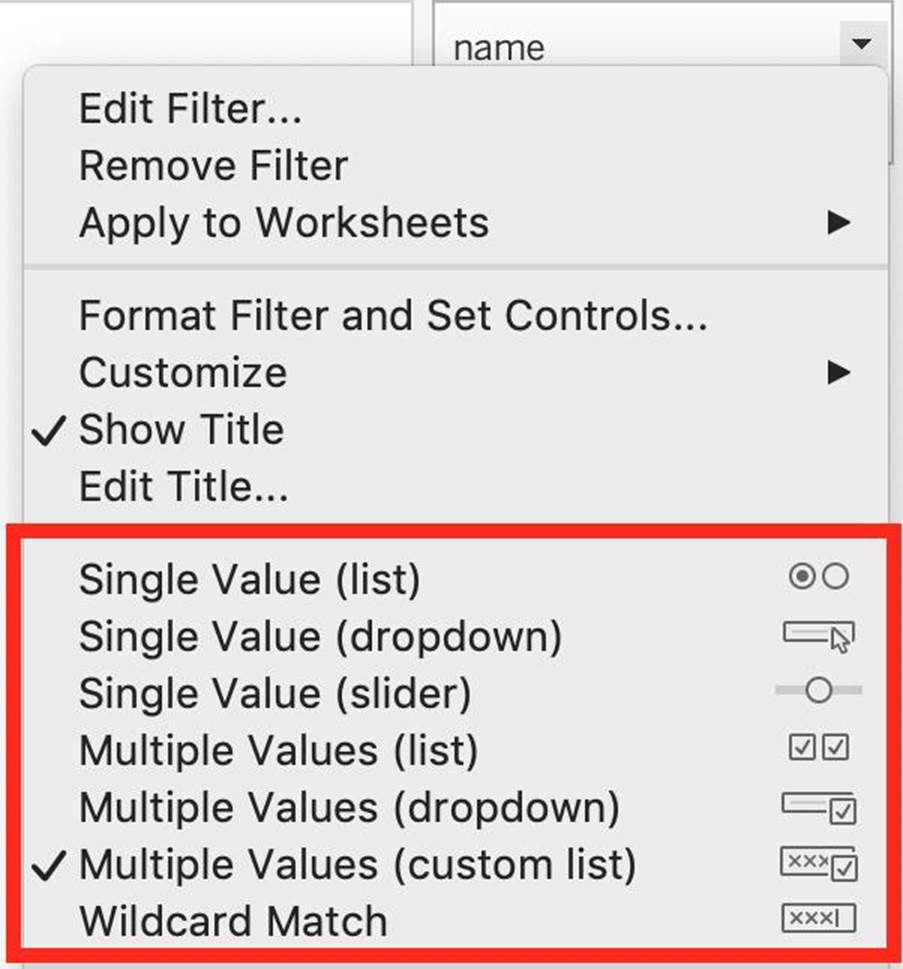
Clearly, Regex Match is not one of these options!
정답:
Explanation:
The data that you analyze in Tableau is often made up of a collection of tables that are related by specific fields (that is, columns). Joining is a method for combining data on based on those common fields. The result of combining data using a join is a virtual table that is typically extended horizontally by adding columns of data. For example, consider the following two tables originating from a single data source:

We can combine these 2 tables, simply by joining the tables on ID to answer questions like, "How much was paid in royalties for authors from a given publisher?". By combining tables using a join, you can view and use related data from different tables in your analysis.

Reference: https://help.tableau.com/current/pro/desktop/en-us/joining_tables.htm
정답:
Explanation:
Explanation Yes! It is possible to duplicate a field and add it to more than one hierarchy. Right click and choose duplicate.
Reference: https://www.tableau.com/about/blog/2016/8/take-note-these-10-handy-tableaushortcuts-57561
정답:
Explanation:
One way to view a measure in Tableau Desktop is to split it into bins. You can think of bins as buckets based on a range of values. For example, say you have a measure that represents age. Instead of aggregating the measure to calculate the average age, you can bin the measure to define age groups: 0C5, 6C10, 11C15, and so on. Then you can count the number of people in each age group.
Create a calculated field for variable bin size Step 1 Select Analysis > Create Calculated Field. Step 2 In the Calculated Field dialog box, complete the following steps:

Reference: https://riti-ritesh.blogspot.com/2016/07/creating-variable-sized-bins_8.html
정답:
Explanation:
Explanation We can perform filter, URL and highlight actions out of the above given choices on a dashboard. Please refer to the image below:

Reference: https://help.tableau.com/current/pro/desktop/en-us/actions_dashboards.htm
정답:
Explanation:
Explanation TWBX is all in one. It contains viz, info needed to build the viz, and a copy of the data source. It doesn’t contain extracts of the data but can contain both live and data extracts. Best if want to eliminate the barrier of data access. Create a .twbx with file-based data sources
1) Select File > Save As.
2) Specify a file name for the packaged workbook in the Save As dialog box.
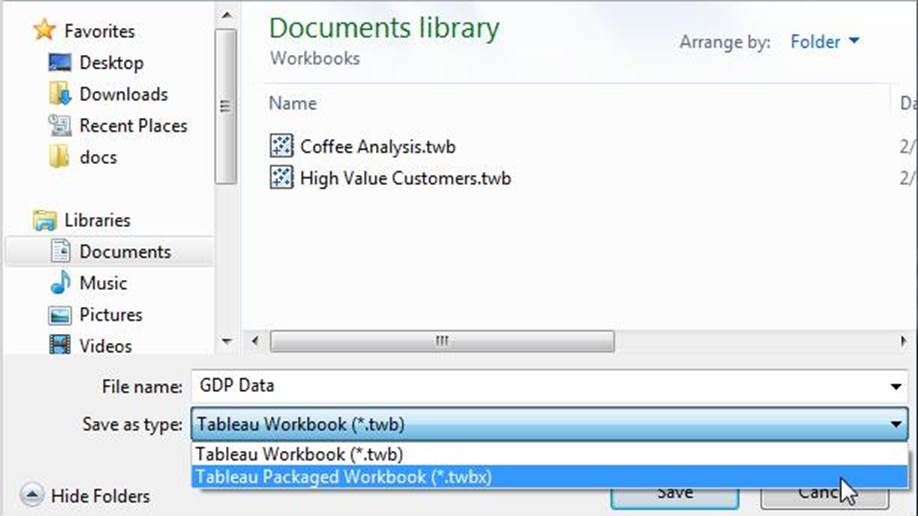
3) Select Tableau Packaged Workbooks on the Save as type drop-down list.
4) Click Save.
5) The default location is the Workbooks folder of the Tableau repository. However, you can save packaged workbooks to any directory you choose. The following files are included in packaged workbooks: --> Background images --> Custom geocoding --> Custom shapes --> Local cube files --> Microsoft Access files --> Microsoft Excel files --> Tableau extract files (.hyper or .tde) --> Text files (.csv, .txt, etc.)
Reference: https://help.tableau.com/current/pro/desktop/en-us/environ_filesandfolders.htm
정답:
Explanation:
Since Sales is a measure, it can easily be depicted via size. To drill down and change the level of detail, Country is the correct choice since it will contain STATE. We can then depict the various states by different shapes such as circle, square etc. Finally, the Profit can be depicted via a color! Eg - Red for poor and green for excellent profits!
Reference: https://www.tableau.com/learn/tutorials/on-demand/aggregation-granularityand-ratio-calculations
정답:
Explanation:
View Data allows you to inspect your data in a spreadsheet-like layout. You can view data
either for the data source as a whole, or to see the underlying data for an individual mark or a group of marks. In a worksheet, the rows that you see in the View Data window are always scoped to the current selection or the current view. The View Data window displays as much of the data as possible by default, up to 10,000 rows. Field names are shown as column headers and can be dragged and dropped to change their display order. Click a column header to sort the values in that column.
From the official website:
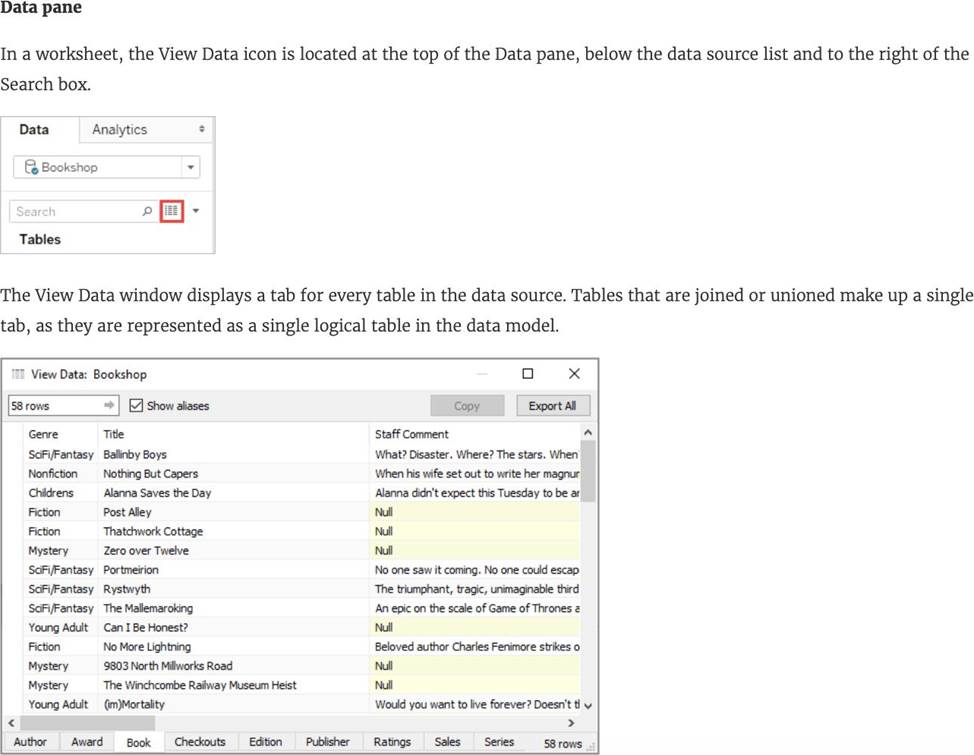
Reference: https://help.tableau.com/current/pro/desktop/en-us/inspectdata_viewdata.htm
정답:
Explanation:
By default, all of the above mentioned are stored in Documents -> My Tableau Repository
Reference: https://help.tableau.com/current/pro/desktop/en-us/environ_filesandfolders.htm
정답:
Explanation:
According to the official Tableau documentation, there are 5 types of trend lines which we can work with in Tableau:
1) Linear Trend Line
2) Logarithmic Trend Line
3) Exponential Trend Line
4) Polynomial Trend Line
5) Power Model
Hence, the correct answer is BINOMIAL trend line which is not present in Tableau. See the following image:
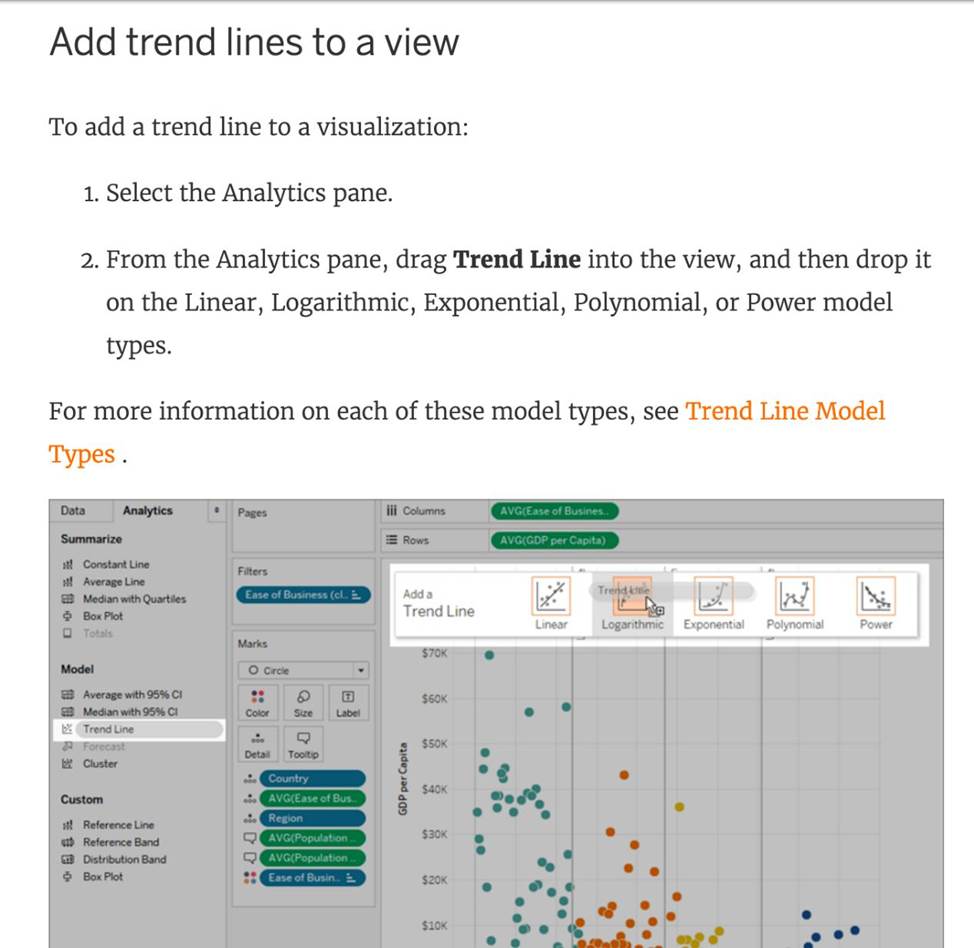
For more information, refer to: https://help.tableau.com/current/pro/desktop/enus/trendlines_add.htm
정답:
Explanation:
Explanation Pretty common question on the Tableau Desktop Specialist exam.
1) First, lets create Sheet 1. For this, drag sport to the Row shelf, and Weight to the Text mark in the Marks shelf. Change its aggregation to Average:

2) Now, for sheet 2 - Drag nationality to the view, and gold to the size mark in the Marks shelf.
NOTE: Depending on your version of Tableau, you may need to assign a Geographical role to the nationality column first as follows:


3) Now, let's create a dashboard, and use both these sheets in it:

4) Now, for the most Important step, use SHEET 2 AS A FILTER FOR SHEET 1 as follows: Now simply click on Russia in Sheet 2, and Sheet 1 will automatically update as follows:

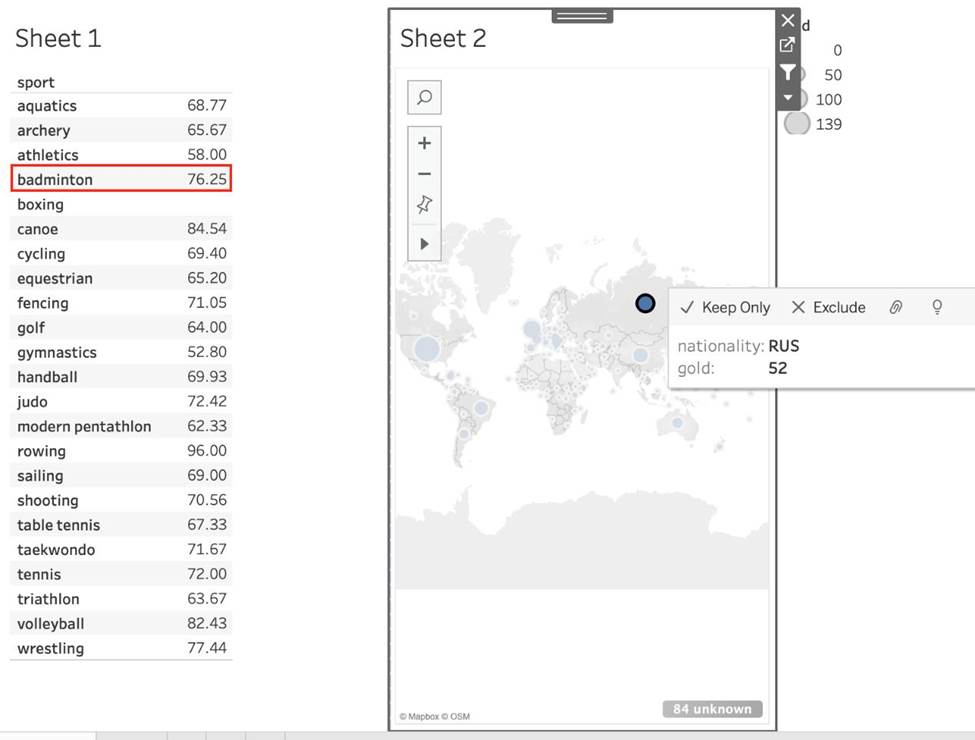
정답:
Explanation:
Relative date filters dynamically update to show a time period relative to when you open the view, such as the current week, the year to date, or the past 10 days. Relative date filters make it easy to create views that always show the most recent data.
Step 1: Drag a date field to the filter shelf Right-click (control-click on Mac) and drag a date field from the Data window to the Filters shelf. In the Filter Field dialog box, click Relative Date, and then click Next.
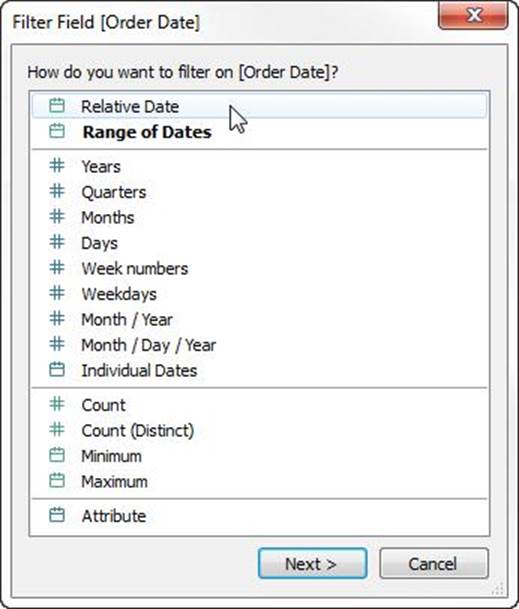
Step 2: Select a time unit In the Filter dialog box, click Relative dates, and then select the unit of time for the filter. For example, to show only the three most recent weeks, select Weeks.
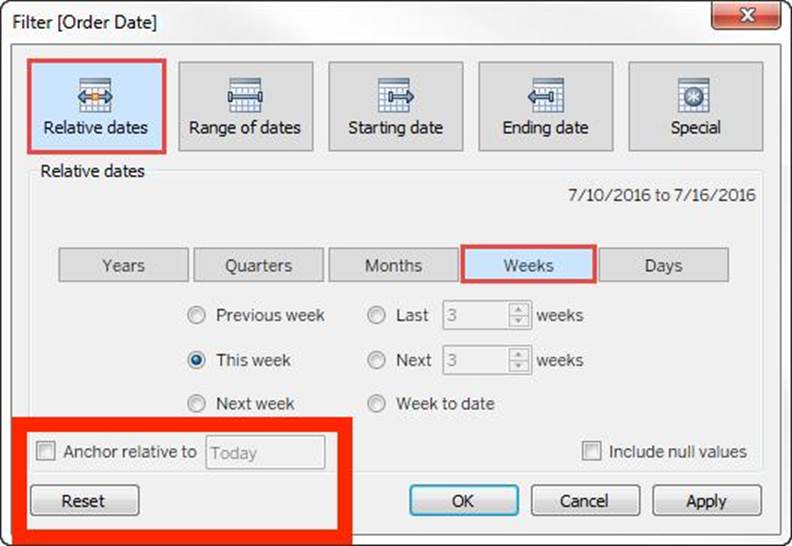
Here, you can clearly see that the default date is TODAY
Reference: https://help.tableau.com/current/pro/desktop/en-us/qs_relative_dates.htm
정답:
Explanation:
The following are the official definitions from the Tableau documentation for the various file types:
1). tds (Tableau Data Source) - To not contain the actual data but rather the information necessary to connect to the actual data as well as any modifications you've made on top of the actual data such as changing default properties, creating calculated fields etc. (CORRECT ANSWER)
2). twbx (Tableau packaged workbook) - To create a single zip file that contains a workbook along with any supporting local file data and background images. This is great for sharing your work with others who don’t have access to the original data.
3) Extract (. hyper or .tde) C To create a local copy of a subset or entire data set that you can use to share data with others, when you need to work offline, and improve performance.
3) (.twb) Workbooks C To hold one or more worksheets, plus zero or more dashboards and stories.
Reference: https://help.tableau.com/current/pro/desktop/en-us/environ_filesandfolders.htm